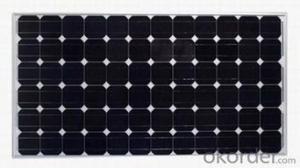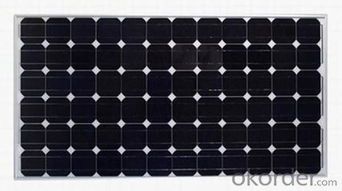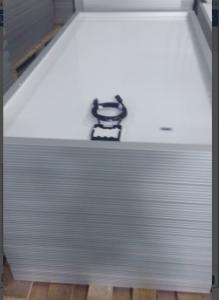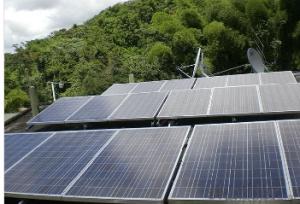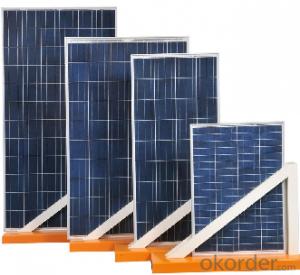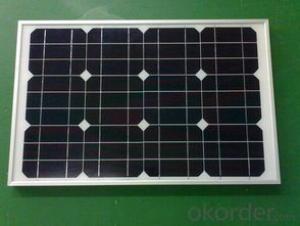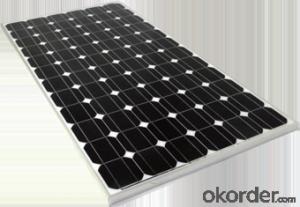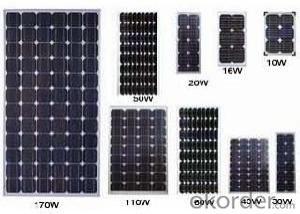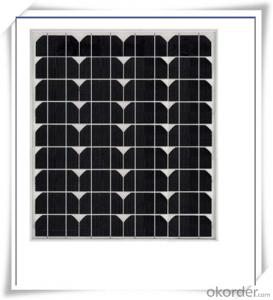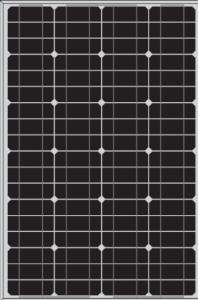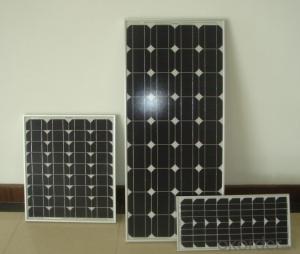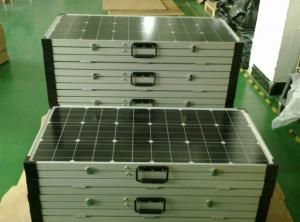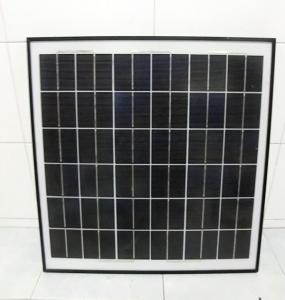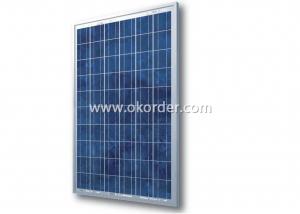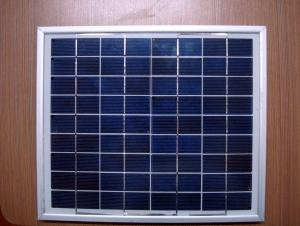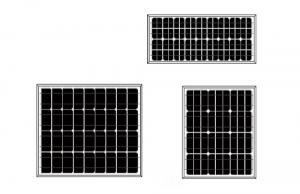Portable Solar Panels for Homes:Factory Price 1.5W to 180W Monocrystalline Solar Panel CNBM
- Loading Port:
- Qingdao
- Payment Terms:
- TT OR LC
- Min Order Qty:
- 10 set
- Supply Capability:
- 300000 set/month
OKorder Service Pledge
OKorder Financial Service
You Might Also Like
1.5W to 180W Monocrystalline Solar Panel
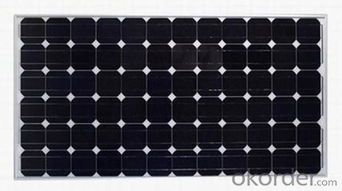

Quick Details
Place of Origin: | China (Mainland) | Brand Name: | CNBM | Model Number: | XRP-156M-250W |
Material: | Monocrystalline Silicon | Size: | 1620x992x40mm | Number of Cells: | 60 |
Max. Power: | 250w | Optimum Operating Voltage (Vmp): | 28.8V | Optimum Operating Current (Imp): | 8.68A |
Open Circuit Voltage (Voc): | 36V | Short Circuit Current (Isc): | 8.87A | Maximum Power at STC (Pmax): | 250W |
Operating Module Temperature: | -40 °C to +85 °C | Maximum System Voltage: | 1000 V DC (IEC) / 600V DC (UL) | Maximum Series Fuse Rating: | 15A |
Packaging & Delivery
Delivery Detail: | two weeks after order confirmation |
Features:
1) High Module conversion efficiency, through superior manufacturing technology
2) 0 to +5W positive tolerance for mainstream products
3) Certified to withstand high wind loads and snow loads
4) Anodized aluminum is for improving corrosion resistance
5) Anti-reflective, Highly transparent, low iron tempered glass
6) Excellent performance under low light environment
Benefit:
25-year performance warrant
10-year Product warranty
Electrical Characteristics:
Item No. | XRM-250W |
Optimum Operating Voltage (Vmp) | 28.8V |
Optimum Operating Current (Imp) | 8.68A |
Open Circuit Voltage (Voc) | 36V |
Short Circuit Current (Isc) | 8.87A |
Maximum Power at STC (Pmax) | 250W |
Cell Efficiency | 17.70% |
Operating Module Temperature | -40 °C to +85 °C |
Maximum System Voltage | 1000 V DC (IEC) / 600V DC (UL) |
Maximum Series Fuse Rating | 15A |
Power Tolerance | 0/+5 % |
STC: lrradiance 1000 W/m2, module temperature 25 °C, AM=1.5;
Best in Class AAA solar simulator (IEC 60904-9) used, power measurement uncertainty is within +/- 3%
Mechanical Characteristics:
No. of Cells | 60(6X10) |
Dimensions | 1640x992x40MM |
Weight | 20.0KGS |
Front | Glass 4.0 mm tempered glass |
Frame | Anodized aluminium alloy |
Temperature Characteristics:
Nominal Operating Cell Temperature (NOCT) | 45±2°C |
Temperature Coefficient of Pmax | -0.44 %/°C |
Temperature Coefficient of Voc | -0.33 %/°C |
Temperature Coefficient of Isc | 0.055 %/°C |
Refer to the Wmp range
Our factory can produce solar panel and solar module from 1.5W-290w (1.5w, 2.5w, 5w, 10w, 20w, 40w, 50w, 60w, 80w, 85w, 125w, 135w, 150w, 165w, 180w), according to customers requirement.
(A). Wmp range: 0.01W-6W, to be sealed with epoxy resin on PCB (printed circuit board), or to be sealed in plastic directly.
(B). Wmp range: 0.01W-15W, to be encapsulated with PET, on PCB (printed circuit board)
(C). Wmp range: 1W-60W, to be encapsulated with PET, on stainless steel, with holes for assembling purpose.
(D). Wmp range: 1W-290W, to be encapsulated with tempered glass, EVA, TPT, together with aluminium frame, junction box and (if necessary)diode and cable.
Refer to the material:
Monocrystalline solar cell or polycrystalline solar cell
Efficiency range 14%-17%, cell size 5/6.
- Q: Can solar panels be installed on a restaurant or food establishment?
- Yes, solar panels can be installed on a restaurant or food establishment. In fact, many restaurants and food establishments have already embraced solar energy as a sustainable and cost-effective solution to power their operations. Installing solar panels can help reduce energy expenses, lower carbon footprint, and showcase the establishment's commitment to environmental responsibility.
- Q: Can solar panels be installed on assisted living facilities?
- Yes, solar panels can be installed on assisted living facilities. In fact, installing solar panels on such facilities can be a great way to reduce operating costs, promote sustainability, and provide a clean source of energy.
- Q: I am interested in installing a home solar panel system. In my city, we get a little over 5 hours of sun, and I typically use about 800-900 kwh per month.The available roof space is small- approximately 600 sqft.The online calculators provided on various sites are not uniform, thus providing inconsistent responses with the same input data.I think I need a 5kw system approximately. Can anyone verify that and provide a link for a reasonably priced system to meet my needs? Prefer grid-tied, but off-grid is acceptable as well.Thanks!
- I'm sure that you will discover everything related solar energy at www.okorder .
- Q: How do solar panels affect the power grid?
- Solar panels can have both positive and negative impacts on the power grid. On the positive side, solar panels generate clean and renewable energy, reducing the reliance on fossil fuels and decreasing greenhouse gas emissions. They can also help to decentralize the power grid by producing electricity closer to where it is consumed, reducing transmission losses. However, the intermittent nature of solar power can pose challenges to grid stability and reliability, as energy generation fluctuates with weather conditions. Additionally, the excess electricity generated by solar panels at certain times can strain the grid if not properly managed. Overall, while solar panels offer significant environmental benefits, their integration into the power grid requires careful planning and management.
- Q: So my buddy and I have an idea to start a small Solar Installation business. Small as in I am only willing to do one weekend a month and two weeks a year(I know it sounds like the reserves). These are my specific question:) What is the average cost in the U.S. to have Solar Panels installed?2) What is the average cost in the state of Hawaii to install Solar Panels?3)Is this a worth while venture? (There's a good chance i'm going to ignore this one anyways LOL!)4)How long does it take to install a photovoltaic solar panel?5)How long does it take to install a hot water solar panel?6)Besides the obvious, what permits are needed to get our start?7)What education or Cert. is needed?8)Average time to start up?If there is any other information you believe pertinent to this subject that I didn't ask directly, please share. Thank you for your help in advance!
- Cba to read all that, but all I know is for 3 sola pannles it cost abot 5000 xxx
- Q: Can solar panels increase the value of commercial properties?
- Yes, solar panels can increase the value of commercial properties. Installing solar panels can lower operating costs by reducing electricity bills and often generate additional income through selling excess energy back to the grid. This can make the property more attractive to potential buyers or tenants and result in higher property values. Additionally, solar panels are seen as a sustainable and environmentally-friendly investment, which can further enhance the property's value in today's eco-conscious market.
- Q: Can solar panels be installed on community buildings?
- Yes, solar panels can be installed on community buildings. In fact, community buildings like schools, libraries, and community centers are excellent candidates for solar panel installations as they often have large roofs or open spaces that can accommodate solar arrays. Installing solar panels on community buildings not only helps reduce electricity costs but also promotes sustainability and clean energy in the community.
- Q: I am starting to think about solar panels as an option for my home. I have done some research on panels, to be honest its all very confusing. There are many different panels some with 60 watts some all the way up to 20 watts. My household currently uses about 2700 to 3400 kWh every two months. So based off of my power usage maybe you can answer some of the following questions:What kind of panels should I be looking at?Which panel manufacturers give the best bang for the buck (reliable/affordable)?Anything else I should be concerned about?I am just starting out in educating myself on solar power so please excuse me if I sound very naive. Any information that you may have will be helpful. Thanks in advance.
- solar cell is a solar cell solar panel are many solar cells.... Typically people refer to a single solar panel as a solar panel, even though they should be reffering to it as a solar cell. A solar panel is a panel of solar cells working in conjunction with each other. I hope that makes sense it is just the incorrect terminology people always use.
- Q: wondering if i should get them?? not sure if its worth leasing? also anyone know anything about solar city?
- It okorder He has a modest system, and soon will be uploading some useful informaiton on cosntructing smaller solar arrays from individual small cells salvaged from various items. At some point too he will cover converting some items people would not really think of to running on 2 volts that once were 20 VAC items. I know the author.. so I get previews. If you post a question in his comments on some aspect or detail or if something is not real clear, he will try to address them too.
- Q: How do solar panels affect the overall air quality of a building?
- Solar panels have a positive impact on the overall air quality of a building. They generate electricity by harnessing solar energy, which is a clean and renewable source. By using solar panels, buildings can reduce their dependence on fossil fuel-based power sources, such as coal or natural gas, which produce harmful emissions. This reduction in greenhouse gas emissions helps to improve the air quality, making the building more environmentally friendly and sustainable.
Send your message to us
Portable Solar Panels for Homes:Factory Price 1.5W to 180W Monocrystalline Solar Panel CNBM
- Loading Port:
- Qingdao
- Payment Terms:
- TT OR LC
- Min Order Qty:
- 10 set
- Supply Capability:
- 300000 set/month
OKorder Service Pledge
OKorder Financial Service
Similar products
Hot products
Hot Searches
Related keywords
